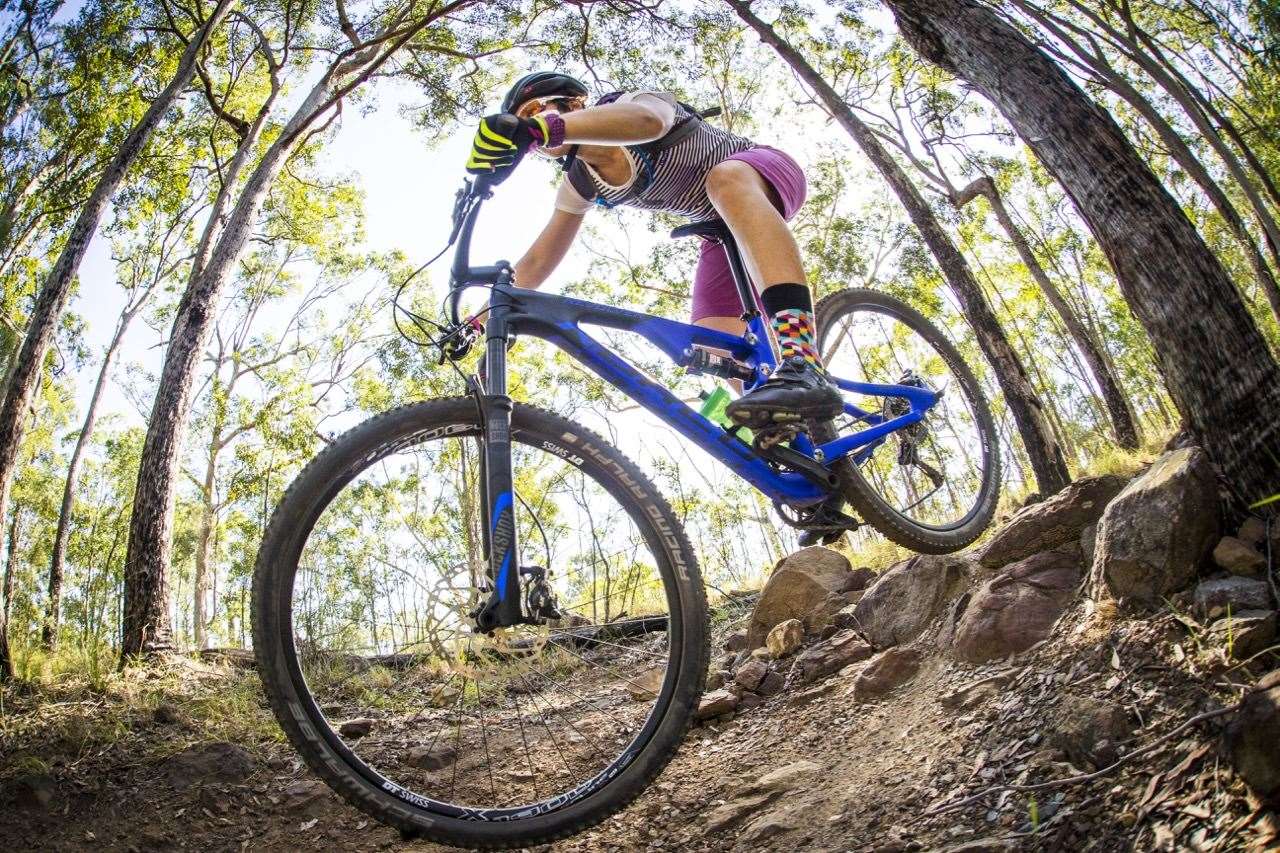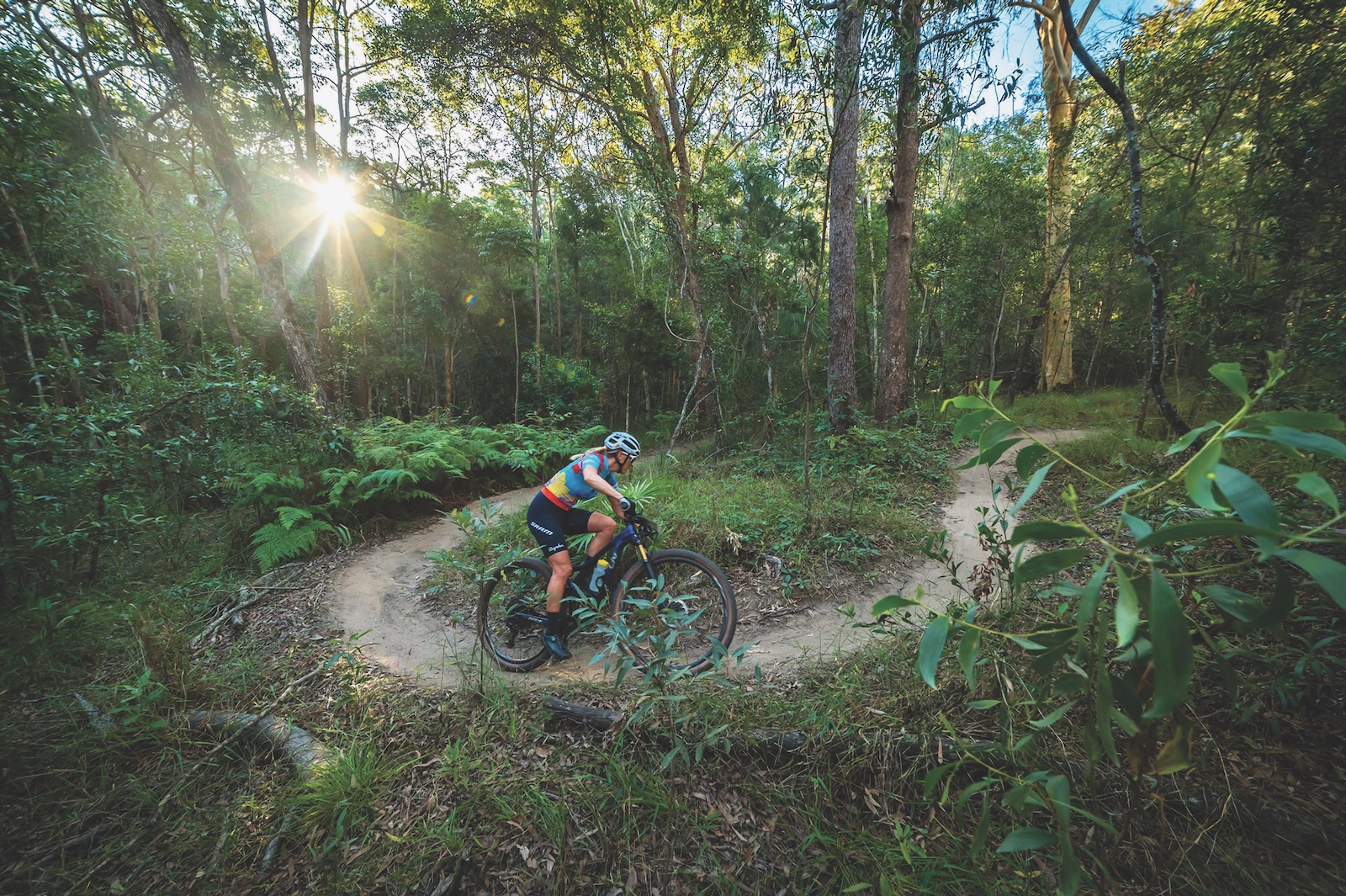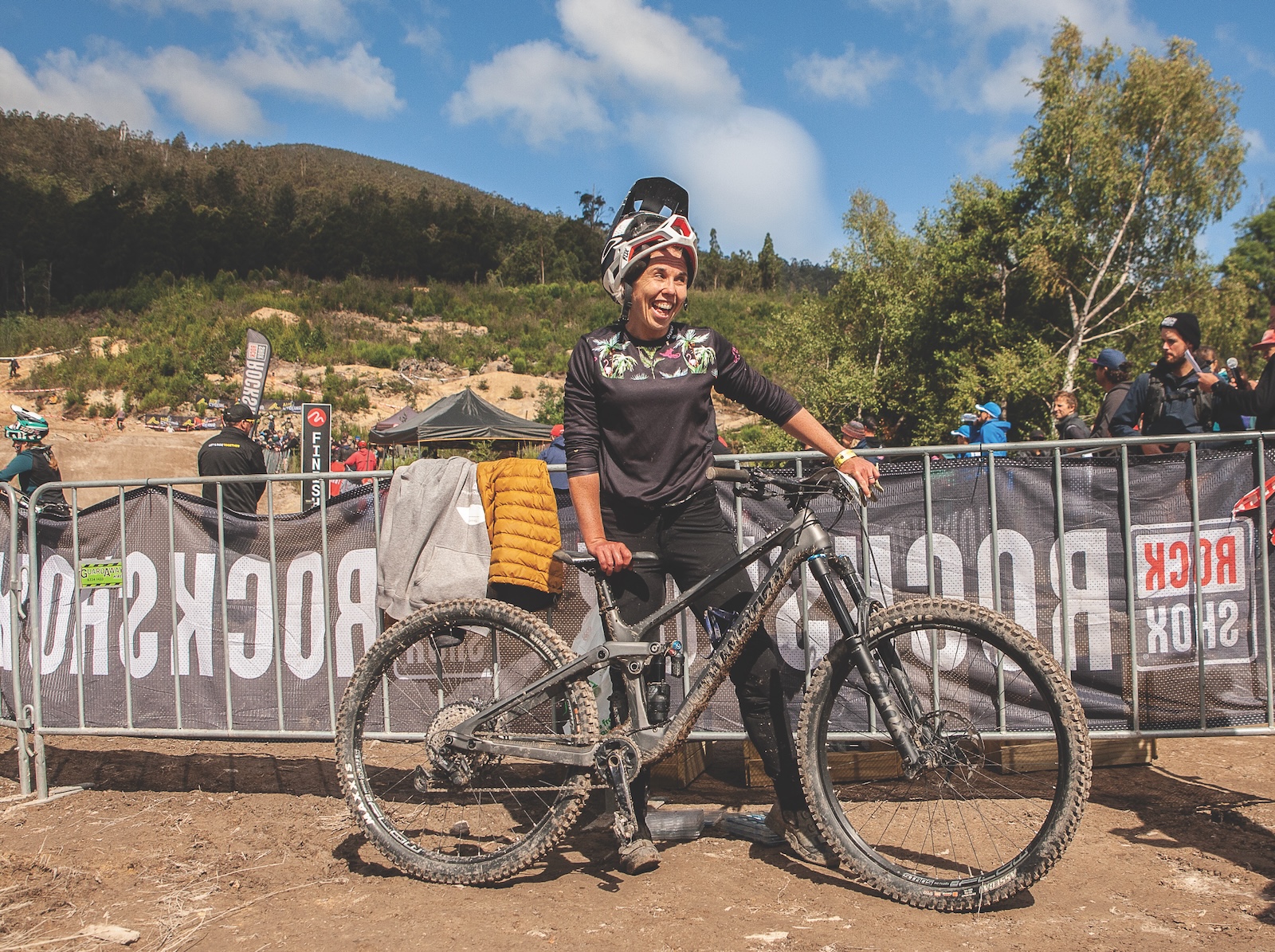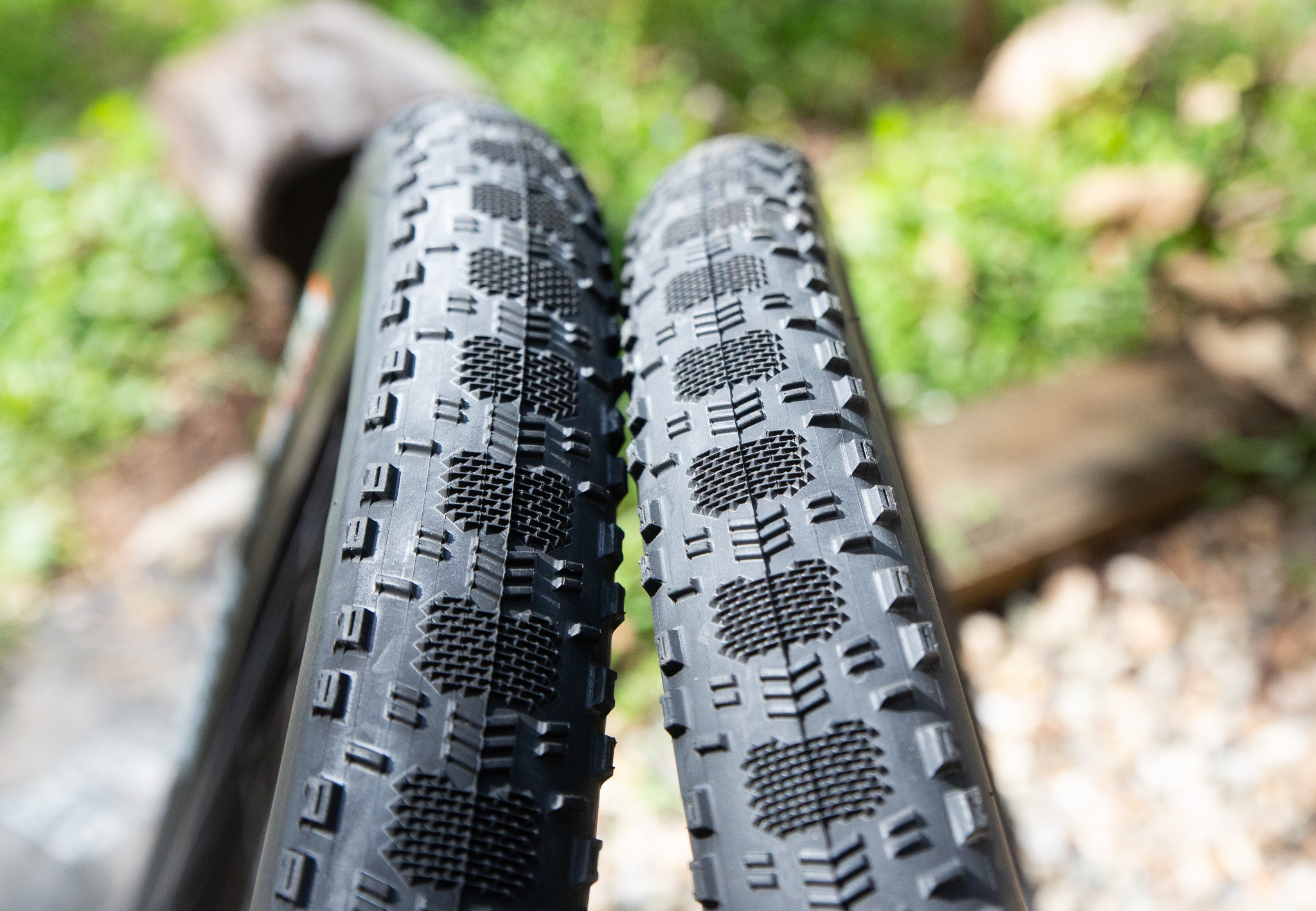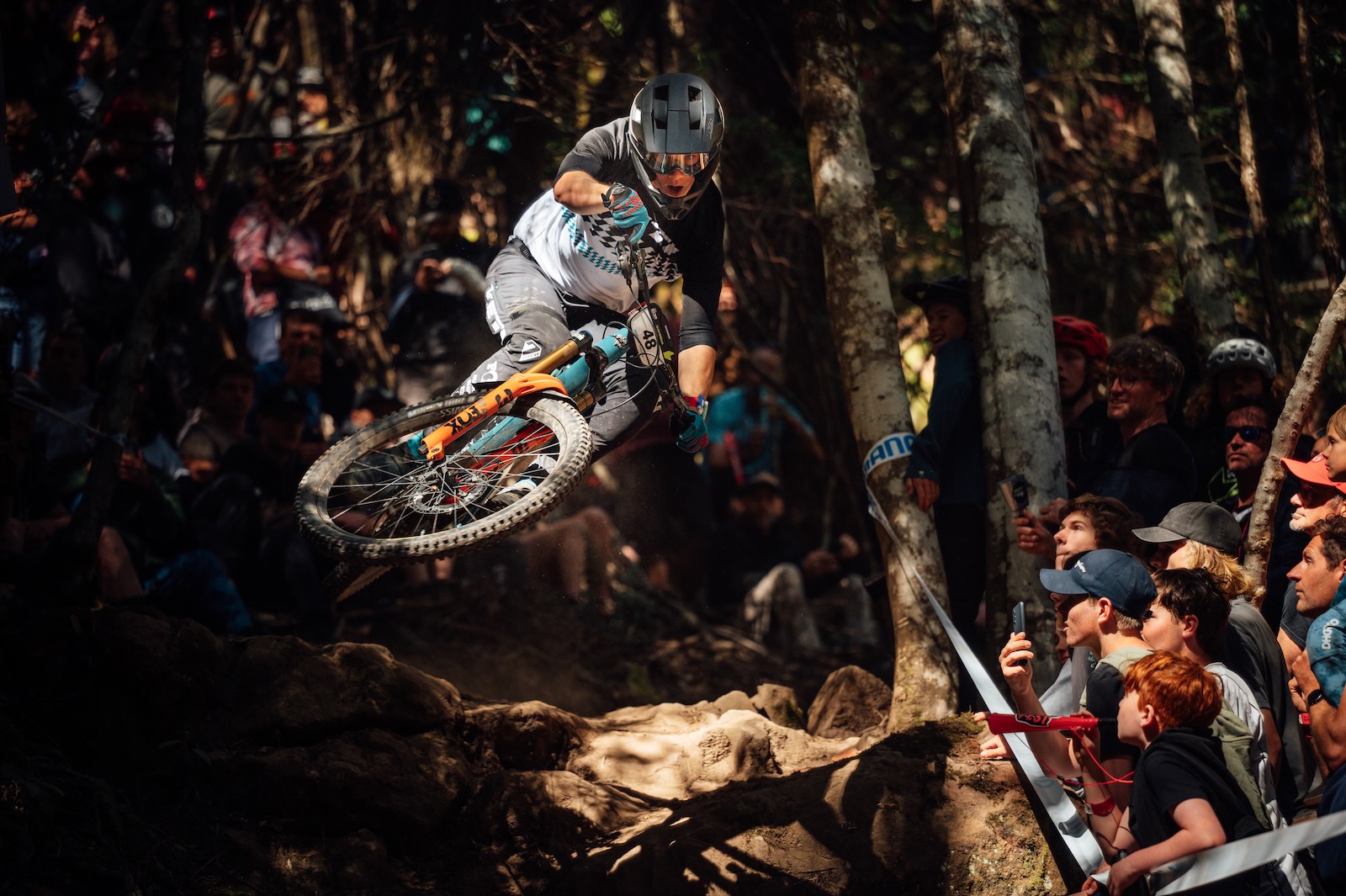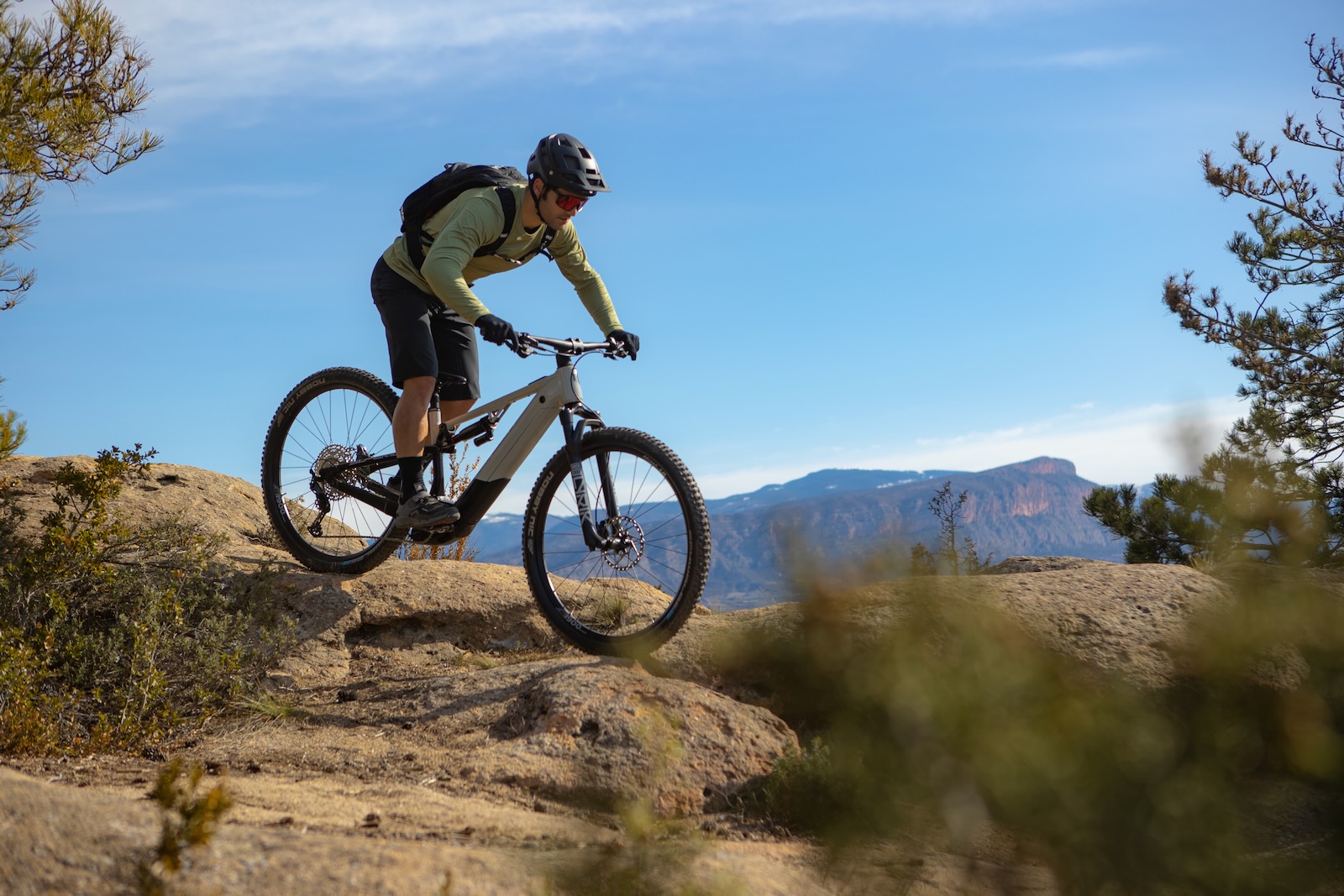TESTED: Norco Revolver 9.2 FS
Photos: Tim Bardsley-Smith
Photos: Tim Bardsley-Smith
Norco shoot to the top
Norco bikes began in 1964 in British Colombia, Canada in 1984 they were one of the first manufacturers of mountain bikes. My early experiences of the brand are essentially so disparate to what I was faced with in the Norco Revolver 9.2 FS, I could hardly believe it was the same brand. Working as a bike shop squid while at uni, Norco was always the cheaper, somewhat nastier alternative to higher end bikes on the market. Norco filled the gap for people wanting to get into the sport on a budget, or without care for aesthetics.
In 2015 I was at a multi-day stage race admiring another rider’s bike from afar, and I was somewhat taken aback when I realised that the smooth lines I was admiring were that of a Norco. Surely not? Indeed, many things have changed since the uni squid days; I can’t drink as much as I used to, backing up after a hard days riding is much more difficult; and Norco bikes have come full circle and are once again a force to be reckoned within the mountain biking community.
The Norco Revolver 9.2 FS is in the middle of their Revolver 9 FS range in Australia; a full suspension cross-country race bike with a 100m platform front and rear. While they offer an entry-level carbon Revolver (the Revolver 9.3 FS) the Revolver 9 range all feature svelte, high-modulus frames. The Revolver 9.2 features reliable componentry and specs easily comparable to other cross-country market frontrunners at this price point that it should do; at $5499 it’s not an entry-level bike.
Initial Impressions
Picking up the bike for testing, we were blown away by the aesthetics of the frame; the iridescent blue is almost luminous, the lines are sleek and a little bit sexy. Norco has gone all out with this frame, with a frame-weight reported as sub 1900g; lighter than many others in the category. Norco has even managed to make the 4-bar Horst linkage attractive with the anodised bolts and oversized tubing.
Norco has really tried to reinvent the wheel with their Gravity Tune Geometry; essentially pairing each size front end with a size-specific rear; which makes a lot of sense and it’s amazing more manufacturers haven’t cottoned on to this. It’s interesting that the rear end size difference is taken into account by BB shell placement on the main frame, and not different length swing arms. Norco claims that this ‘Gravity Tune’ enables better distribution of rider weight for a given size and, in turn, a better ride experience. Having had a lot of experience searching for the ‘ultimate ride’ with 29” wheels and in a size in the realm of small to medium, ‘Gravity Tune’ makes sense in theory; no one wants to be riding a boat and, anything that can liven up the sometimes dead and truck-like feeling of early 29” bikes can only be a good thing.
The drivetrain is a solid performer, with XT 11 speed throughout (not merely a decorative derailleur on a Deore build), and featuring a 180mm/160mm rotor configuration puts it out there that this may be a bit more than your straight-cut cross-country rig. While our demo came with RaceFace cranks, a quick chat to Norco revealed this bike was an early model from Canada and Australian models feature XT crank sets.
On paper the geometry looks dialled; top tubes have generally been getting longer and stems have been getting shorter, especially in the gravity realm, and the Norco reflects this in its 574mm TT (size small) paired up with a 60mm stem which us wonder if Norco is trying to pitch their cross-country bike to a wider audience.
The bike is tubeless ready however was not set up tubeless, so first thing first was to set the bike up tubeless which was without incident.
At 11.17kg without pedals, ready to go, this is a bike that is quite decent in the weight stakes considering how easy it would be to put it on a diet; a set of wheels, perhaps new bar, stem, post and saddle would see some hefty grams shed with ease. That being said, 11kg is hardly a heavyweight and the bike, as is, features a reliable ‘ride all day’ spec.
On The Trail with the Norco Revolver
First impressions were after a big night and probably not the best time to be testing a bike, however we immediately noticed that the 60mm stem rendered the bike on the small side for me; it felt comically small. The geometry looked like a perfect fit but in order to be fit for purpose, it needed to be rounded out with a 80–90mm stem. The next ride, we swapped this out and felt like we were on a new bike, one that was immediately playful and flickable yet retained the stability required for cross-country and marathon events. It also reduced the feeling that we were perched atop the bike like a circus bear.
Despite our initial impressions, after another ride or two we began to understand how the bike handled, we adjusted the seat fore/aft and I began to embrace the bottom bracket height’s extra clearance; we lost the perched feeling on the bike and started to feel a real sense of direct steering that translated to feeling pretty zen with the trail. This was partially due to the forward position of the bike, a 74.75 degree effective seat tube angle, positions you right in the middle of the bike, and is one of the reasons this bike is begging to move forward. Together with the steep-ish 70.25 degree head tube angle, it’s a bike that whips like a cross country rig but maintains enough stability to take hits like a much bigger bike.
On my local trails, I found myself clearing jumps with precision that were previously stylishly cased. The very short headtube (90mm), and head tube angle, along with the short rear stays (437mm) made flicking the bike around corners easy; such was the direct feeling of the front end along with the ability to move around the bike, which can often be difficult for shorter riders on 29” bikes. The rear suspension maintained traction on long precarious off-camber descents that are difficult to navigate on hardtails and other cross-country full suspension bikes I have ridden.
The bike’s four-bar linkage climbed like a dream; the lockout platform was firm and there was no wasted energy pedalling the bike uphill, the only limiter being the slight beef of the entire bike (for a pure cross-country bike) noticeable when gradients were above 10%. While others noted that the RockShox Monarch RL is far from the greatest performer out there, when setup correctly it performed admirably. It would be interesting, however, to see how heavier riders found the suspension. The RockShox SID RL performed without qualms, however required a seal change after one particularly long ride. This demo bike has been ridden hard in Canada and in the Australian demo fleet, so it is possible that time was up for those seals anyway.
The Schwalbe Racing Ralphs are a fast ‘all terrain’ tyre option, however the penalty for the lightweight tread was multiple flats and quick-to-wear compound, perhaps swapping these out for some more reliable longer-wearing tyres could be a good idea; save the Ralphs for race day.
The new XT brakes are party favourites, their formidable bite allowed a ‘leave it to the last second she’ll be right’ approach which yielded some excellent seat-of-your-pants riding. The XT 11-speed drivetrain couldn’t be faulted, it performed exceptionally well cementing it’s place at the top of the cost-to-performance ratio hierarchy of drivetrains.
The only problems we encountered with the bike (aside from slicing tyre-walls) that cleaning around the rear suspension was a little tricky however not impossible. Internal cable routing (including the capacity for a dropper post, how exciting!) makes riders happy with sleek lines and mechanics irritable at best, so consider the time factor of internally routing all your cables if you’re a DIY person.
Our Take
The Norco Revolver was a real surprise packet, rising from the ashes of cheap alloy hardtails, their new range exceeds all expectations and is easily in competition with historically more ‘boutique’ brands. In our opinion, this bike is far more attractive than many other bikes in higher price ranges. Aside from a fork seal issue and tyre selection, this bike was a reliable performer throughout all sorts of punishment in fair and foul weather. The small frame fits a small-medium bottle on the down tube mount, too, which is always a win for a smaller rider.
Aside for some minor gripes we couldn’t have been happier with the performance and weight of the Norco. If you are in the market for a cross-country or marathon dually that climbs like the clappers and descends like a trail bike with inches more travel, then the Norco Revolver 9.2 FS may be just for you.
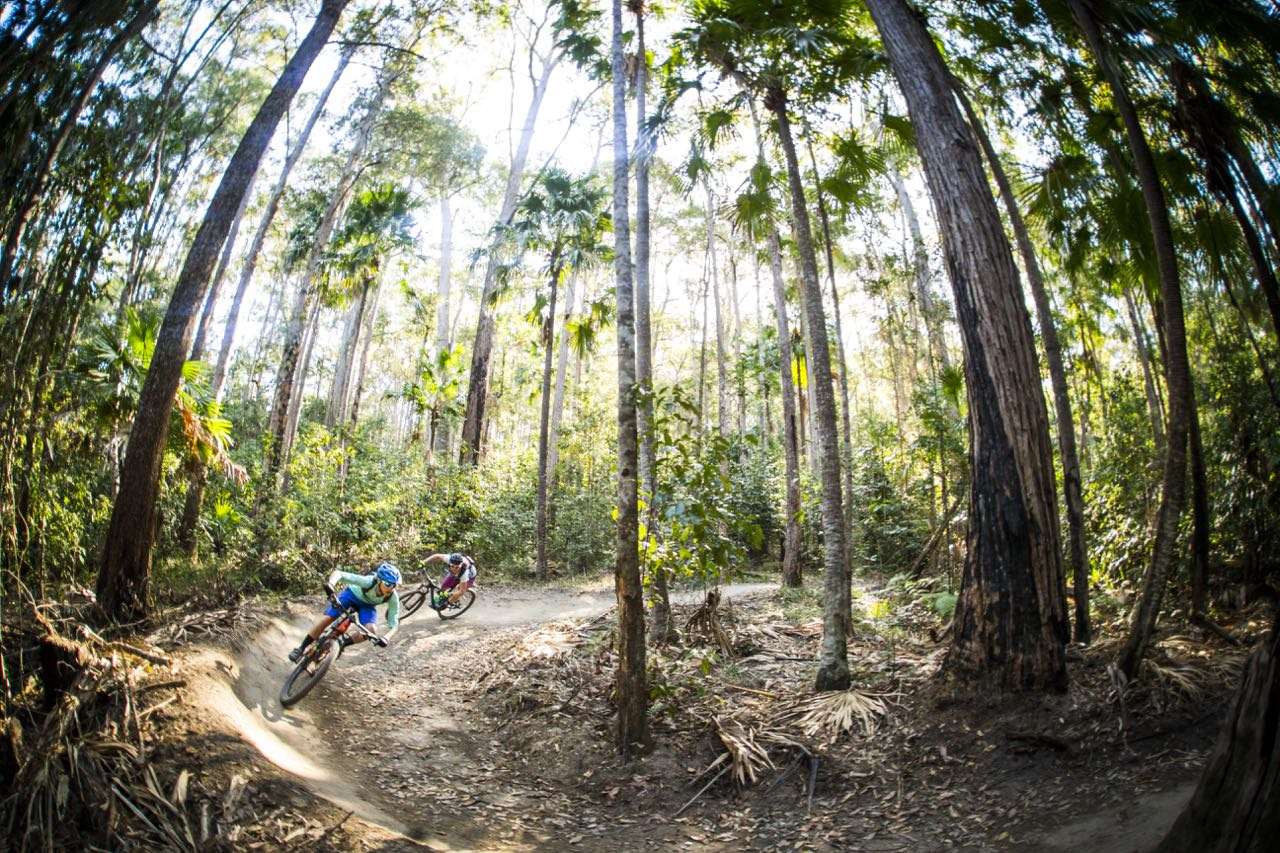 Noosa was also a good testing ground. (c) Tim Bardsley-Smith
Noosa was also a good testing ground. (c) Tim Bardsley-SmithNorco Revolver 9.2 FS – The Essentials
RRP: $5499
Weight: 11.7kg
From: advancetraders.com.au
Tester: Anna Beck
Riding experience: has ridden and raced XC, XCM, Enduro and Road for a few sneaky years
Generally Rides: Niner Air9, Yeti SB, Trek Emonda
Height :167cm
Weight: 60kg
Bike Test Track: Les Alps of Brisbane
Things you liked about the bike:
- The luminous blue was initially dazzling, the bike’s smooth lines make it look the goods
- Well rounded componentry without cheating out on the rear derailleur or other less noticeable parts
- Gravity Tune geometry made manoeuvring in tight technical trails a dream
Things you would change about the bike:
- The short stem made the bike ride like it was having an identity crisis; for XCM or XC racing the added stability of a longer stem was a huge benefit
- Schwalbe Racing Ralph tyres sidewall created some issues with several flats; the tread also wore very quickly

